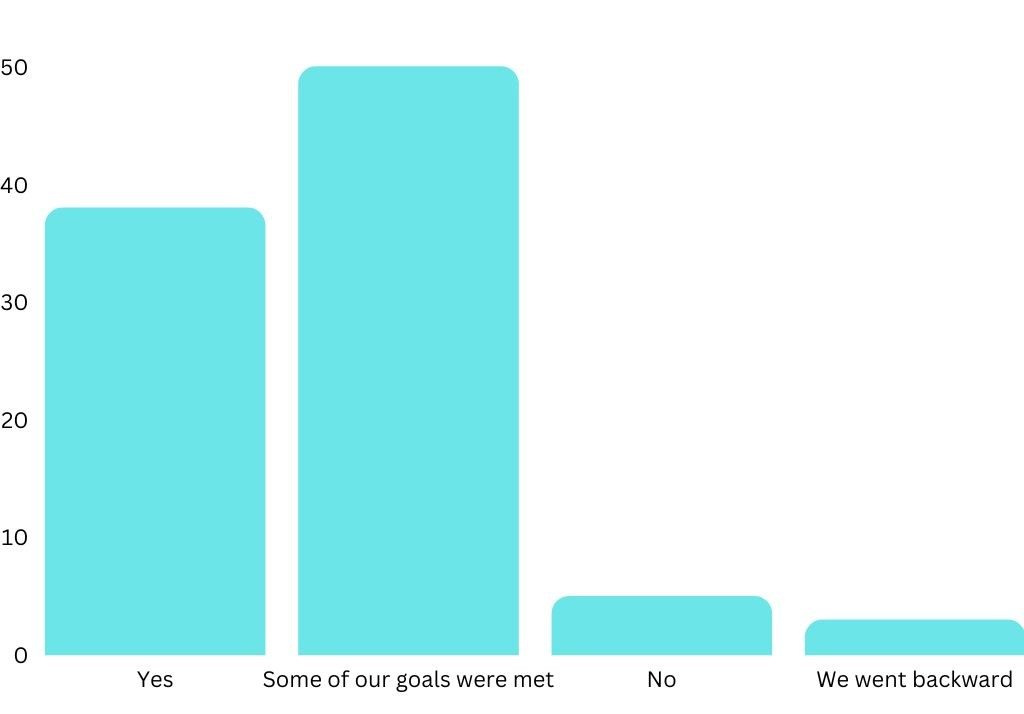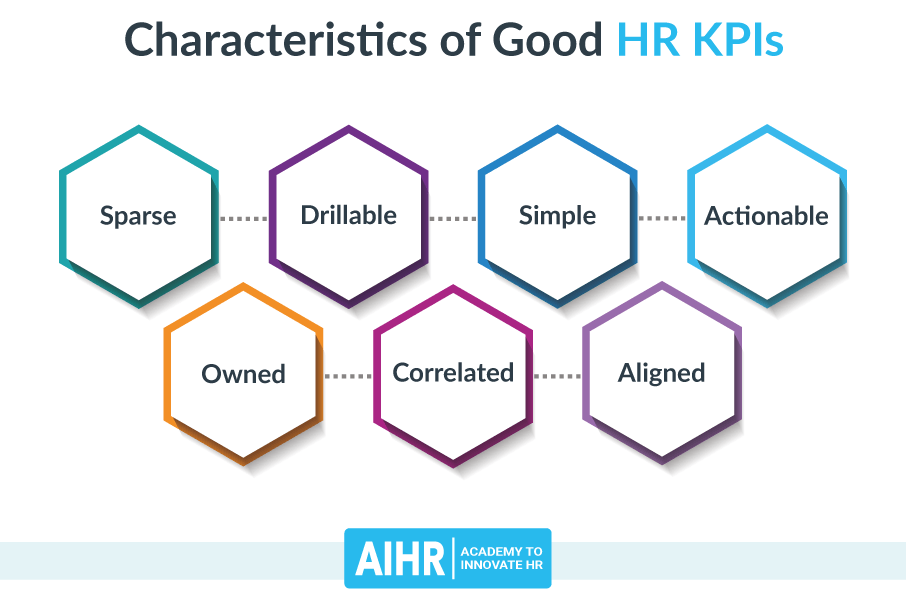According to Gartner, by 2025, 60% of global midsize and large enterprises will have invested in a cloud deployed HCM (Human Capital Management) suite for administrative HR and talent management.
Leaders are now increasingly turning to HR Technology, aka HR Tech 4.0 as antiquated methods such as spreadsheets are not able to provide an accurate picture from the humongous amount of employee data being generated.
According to the Sierra Cedar report, the average large company now has 11 core HR systems – for recruiting, learning, communications, payroll, and more.
Josh Bersin further states in a report that the overall spending on HR technology is several thousands of dollars per employee per year (often more than is spent on training and enablement).
But the ROI (return on investment) of these HR platforms are fuzzy to say the least.
When asked if their HR projects delivered on their expected business value, this is what employers said:

Source: IHRIM HR Software Study
To solve for this, in this article we will talk about the different steps businesses can take to maximize the ROI from their HR Technology investment.
Step 1: Determine the state of your existing HR Technology
To measure the ROI of your HR technology initiatives, it is first crucial to get a strategic view of what is going on with your current technology investments. Therefore, you ought to a complete audit of your existing processes, projects, and the impact it is having on your company to not only identify gaps, but also to benchmark progress for the future.
Let us say, you are planning to implement an employee onboarding program and need to determine the ROI. The ROI in this case would not only be measured in terms of cost savings and productivity but also intangibles such as employee satisfaction which can be measured using surveys and other mechanisms.
In this case, let us say you spend 6 months implementing an L&D program. While the initial investment might have been more than expected, the ROI in terms of reduction in employee turnover and satisfaction scores might very well make the initial investment worth it.
For organizations, it is hard to demonstrate the success or ROI of an HR initiative if you do not have clear data on where you were starting from. Therefore, before you attempt to measure the ROI of your HR efforts, ensure you are collecting as much data as possible.
The following needs to be considered:
- Annual cost of the HR software including subscription fees, data storage or support.
- First-year set up costs such as data import, customisation or configuration services, project management or training costs. You will also need to factor in the cost of your own time as a separate item.
- Ongoing costs to cover any additional expenses you may need to pay, such as additional configuration or customisation by the vendor plus the time needed by your team for ongoing maintenance.
- Training costs to bring employees up to speed
- Payback period. In this case, the number of years you expect to use the solution for.
Step 2: Set clear KPIs (Key Performance Indicators)
You cannot effectively measure the ROI of HR if you do not know what exactly you are measuring — which is why for organizations, there is an urgent need to setup mechanisms to do so.
KPIs help you determine what you are trying to accomplish with your HR initiatives and establish goal posts.
Case in point, let us say you are rolling out a new learning and development program. In this case, the ROI can be measured by determining the difference in productivity before and after the program – (By anonymous surveys from reporting managers?)
Whatever method you choose to measure the ROI, KPIs give you the metrics you need to evaluate the success of an HR initiative, and from there, you can not only better calculate your return on investment but continue to optimize the initiative to improve the ROI.
“Analytics has moved from the periphery to the centre of HR” – David Green
Your KPIs should ideally be tied to your business goals. This helps you effectively understand how your initiatives impact the company’s bottom line.

Source: AIHR
Examples of good HR KPIs (Key Performance Indicators) in this case might include the following:
- Absence rate
- Absence cost
- 90-day quit rate
- Benefits satisfaction score
- Employee productivity rate
- Employee satisfaction index
- Net Promoter Score
- Voluntary Turnover Rate
As a HR leader, it is crucial to ensure that the KPIs that you are listing can be measured by the tools that you are already using.
Step 3: Iterate
Once you have setup mechanisms to track HR data, you can use the information to identify new areas of HR technology automation and areas where existing software can be replaced if needed.
In the case of the latter, research and compare different technology options to find the one that best meets the needs of the company. This could include looking at different vendors, products, or pricing options.
Choosing the right HR partner involves conducting a thorough review of the HR technology market by reading product reviews, attending industry conferences or events, or consulting with HR technology experts to get recommendations.
Once you have identified a few potential technology options, create a comparison matrix that lists the key features of each technology as well as the costs associated with each option. By comparing the different options side-by-side, the HR leaders can determine which technology is the best fit for the company’s needs and budget.
Let us say you want to automate employee attendance tracking process. In this case, the HR leaders need to compare different options based on factors such as the ease of use, the accuracy of the attendance tracking, and the pricing.
In this way by iterating on their existing HR processes and identifying new areas where HR technology can be implemented, the organization can make informed decisions and maximize the ROI of their tech initiatives.
Best Practices for ensuring ROI credibility
- Work with credible and unbiased data
Make sure to use first-hand information and data from unbiased sources if possible. If you use third-party sources, ensure that they are credible and unbiased.
- Focus on actionable metrics
Rather than focus on intangibles such as employee branding, try to focus on metrics that can be reported on. For instance, that might include metrics such as time to process leave requests, payroll, and so on. The intangibles can be itemised separately.
- Use numbers wherever possible
Showing the detail of your calculations allows for a more informed discussion about the pros and cons of different approaches.
- Build in variables
Include a worst-case and best-case scenario when modelling different scenarios, and you incorporate all variables.
- Include hidden costs
Remember to account for hidden costs, such as the time you will need to set aside to manage the process or ensure data is clean.
- Specify your payback period
Stakeholders such as finance would want to know this to determine the feasibility of your proposed initiatives.
- Talk about risk
Budget holders will be looking for reassurance that the investment will be safe. This is especially important if you are reliant on the HR vendor for digital transformation.
Check out PeopleStrong to make more data-driven people decisions
PeopleStrong’s HR-Tech 4.0 platform is an integrated suite of solutions that enables organizations to offer their employees end-to-end services across their life cycle thus enhancing their employee experience.
The platform capabilities span the employee lifecycle from hire to exit, including Human Capital Management, Payroll, Talent Acquisition & Management, and Collaboration.
Organizations across Asia-Pacific, such as Inspiro, AirAsia, Aditya Birla Group, Max Life Insurance, and more, already use our HR Tech 4.0 platform to make data-driven decisions.
Check out the all-in-one HR platform
Schedule a demo

